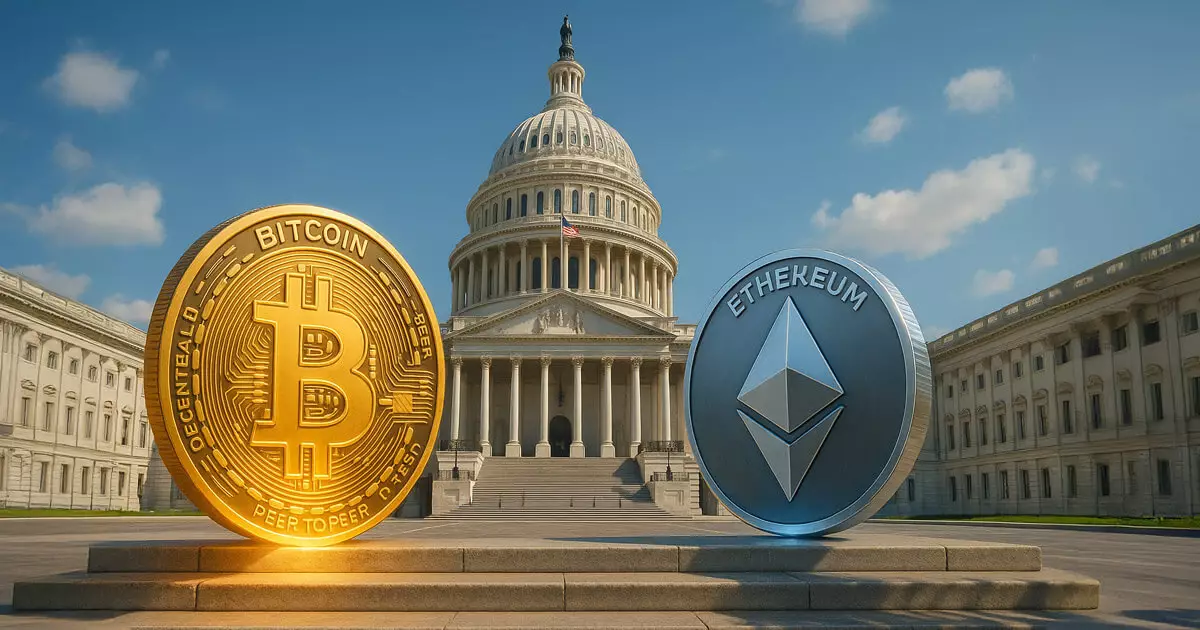In recent months, the political establishment has presented a facade of unity, promising bipartisan cooperation to regulate the chaotic realm of digital assets. Prominent Democratic senators, led by Ruben Gallego, have called for swift, cooperative action, attempting to sound responsible and progressive. However, beneath this veneer lies a dangerous naivety about the true nature of the crypto industry and the political incentives that drive regulation. While they tout “mutual understanding,” the real agenda seems to prioritize placating bureaucratic interests and established financial institutions rather than genuinely protecting consumers or fostering innovation. This supposed partnership could end up cementing the regulatory capture of an industry that, unencumbered, holds vast potential for financial democratization.
Cherry-Picked Foundations: The Illusion of Consumer Protection
The core of the proposed legislation hinges on expanding regulators’ authority—particularly empowering the Commodity Futures Trading Commission (CFTC)—while creating overlapping jurisdictions with the Securities and Exchange Commission (SEC). The bipartisan script suggests a careful balancing act: the CFTC would oversee digital commodities, while the SEC would police tokenized securities. Yet, this division on paper disregards the intrinsic ambiguity and innovation-dampening risks embedded in such regulatory bifurcation. By formalizing these powers, regulators will inherit broad discretion, which could easily morph into excesses of intrusion, hampering legitimate innovation under the guise of consumer protection.
It’s reasonable to question whether these proposals are genuinely designed to safeguard investors or merely serve established finance and political interests eager to control a growing sector. Legislation requiring registration, disclosures, and compliance—while seemingly sound—often become burdensome, serving as barriers to entry and stifling the very innovation they claim to support. The same regulators who have proven incapable of supervising traditional finance adequately are now entrusted with overseeing a landscape rife with opacity and complexity. This disconnect raises serious concerns about whether such regulations will truly protect consumers or simply entrench bureaucratic dominance.
Regulation as an Instrument of Control, Not Innovation
A closer look reveals that the proposed rules are crafted more for control than for fostering a fair or transparent market. Expanding regulator authority—especially over decentralized finance (DeFi)—inevitably increases oversight, but the industry’s very ethos is rooted in decentralization, permissionless innovation, and censorship resistance. Incorporating DeFi into a regulatory framework essentially means subjecting it to the stifling reach of bureaucratic oversight, which dilutes its disruptive potential and hands power to the same institutions that have historically failed to protect investors from their own mismanagement.
Barriers introduced through registration requirements, AML compliance, and restrictions on stablecoins may appear neutral, but in reality, they enforce a top-down control that favors incumbents and entrenched financial giants rather than the open, permissionless spirit of crypto. In seeking to regulate all digital assets uniformly—whether centralized or decentralized—the legislation risks destroying the very flexibility that makes blockchain technology revolutionary. Instead of embracing innovation, regulators are creating a framework that suppresses experimentation under the guise of necessary oversight.
Political Incentives Behind the Regulatory Push
The push for bipartisan legislation can be partially explained through strategic political motives. By engaging in the appearance of cooperation, legislators can appeal to voters concerned about financial safety without alienating influential industry stakeholders. Moreover, accepting the status quo—by crafting legislation that consolidates power within existing bureaucracies—avoids the disruptive upheaval that truly deregulated markets might garner.
Elected officials, particularly those with financial ties or aspirations, are often more interested in maintaining their influence and control than in genuinely democratizing finance or encouraging innovation. The emphasis on preventing officials from profiting from crypto while in office is notable, but it’s only a symbolic gesture unless accompanied by broader reforms that limit lobbying and regulatory capture. Ultimately, this legislation advances the interests of a select few—whether regulatory bodies or big finance—at the expense of entrepreneurs, retail investors, and the broader promise of digital currency.
The Unseen Risks of Overregulation
Historical precedent shows that overregulation often paves the way for unintended consequences. Restrictive rules may chase away innovative projects, concentrate power among large players, and increase the cost of compliance, thereby excluding smaller entrants. As governments seek to “bring order” to the crypto chaos, they inadvertently create a market environment less resilient and more susceptible to monopolistic practices.
The inclusion of AML obligations on foreign entities servicing U.S. customers also extends regulatory reach beyond national borders—effectively extraterritorial control that could spark retaliatory measures, diminish international cooperation, and stifle cross-border innovation. The legislation’s focus on standardization, while appealing superficially, risks ignoring the unique, borderless nature of blockchain networks.
This proposed framework will, inevitably, redefine the digital finance landscape, often for the worse. The intention to create a “safe” environment may well backfire, leading to a heavily monitored, bureaucratic infrastructure that discourages innovation while entrenching existing industry players.

